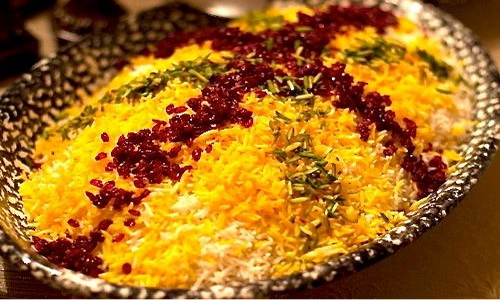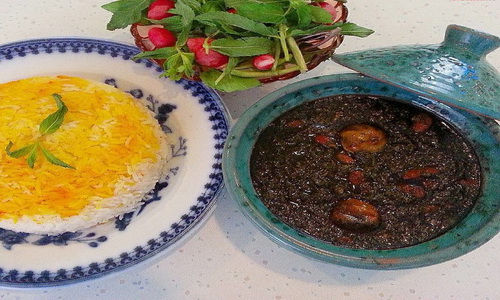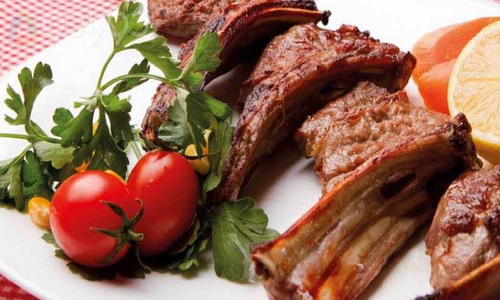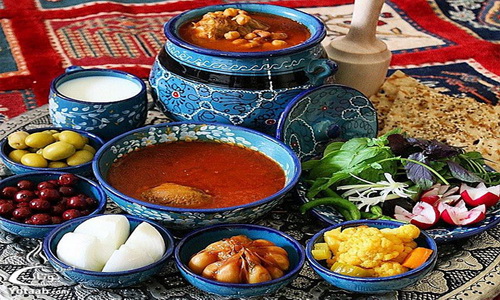Iranian Cuisine

Iranian Appetizers
March 21, 2017
Skiing in Iran
March 22, 2017Main Dishes
The outcome is a well-balanced mixture of herbs, meat, beans, dairy products, and vegetables. Major staples of Iranian food that are usually eaten with every meal include rice, various herbs, cheese, a variety of flat breads, and some type of meat (usually poultry, beef, lamb, or fish).
- Fesenjan
- Sabzi polo with Fish
- Baghali polo
- Zereshk polo
- Kebab ( Chicken & Lamb )
- Ghormesabzi
- Gheymeh
- Dizi
NOOSHE JAN !

Zereshk Polo
This classic rice dish is studded with red berries, which are dried and then rehydrated before cooking. The rice is cooked with plenty of butter, which helps to soften the intensity of the berries. Quince, rhubarb, green plums, sour oranges, lemons, limes, dried limes, sour cherries, tamarind, sumac, and pomegranate are all used in Persian cooking to make food more tart.

Ghormeh Sabzi
Made from herbs, kidney beans, and lamb, deep green Ghormeh Sabzi satisfies two Persian flavor obsessions: it’s sour and full of herbs. The stew is seasoned with dried limes, limoo amani in Farsi. These limes are extra intense and sour, with a bittersweet taste that gives the stew a unique flavor. The other constant in Ghormeh Sabzi is fenugreek leaves, a taste unfamiliar to most westerners. Other herbs include parsley, coriander, and scallions.

Kebab
Kebabs have more variety than you might think. First, there’s koobideh, ground meat seasoned with minced onion, salt, and pepper. It sounds simple, but the taste is sublime. There is kebab-e barg, thinly sliced lamb or beef, flavored with lemon juice and onion, and basted with saffron and butter. Chicken kebab, known as joojeh, is traditionally made from a whole chicken, bones and all, for more flavor marinated in lemon and onion, and basted with saffron and butter.

Dizi
Abgoosht is an Iranian stew. It is also called Dizi , which refers to the traditional stone crocks it is served in. Some describe it as a "hearty mutton Persian soup thickened with chickpeas.
Would you like to have the amazing book on Iranian Foods ?
Click Me!